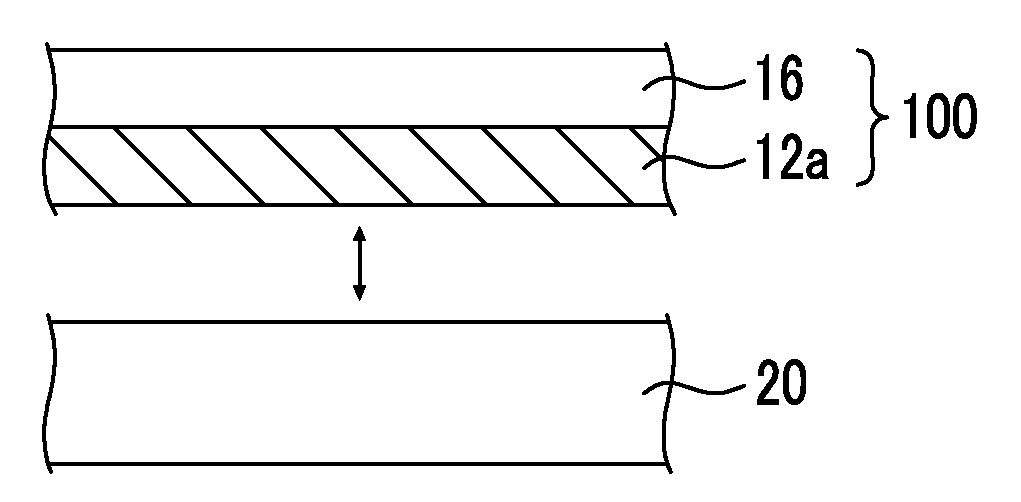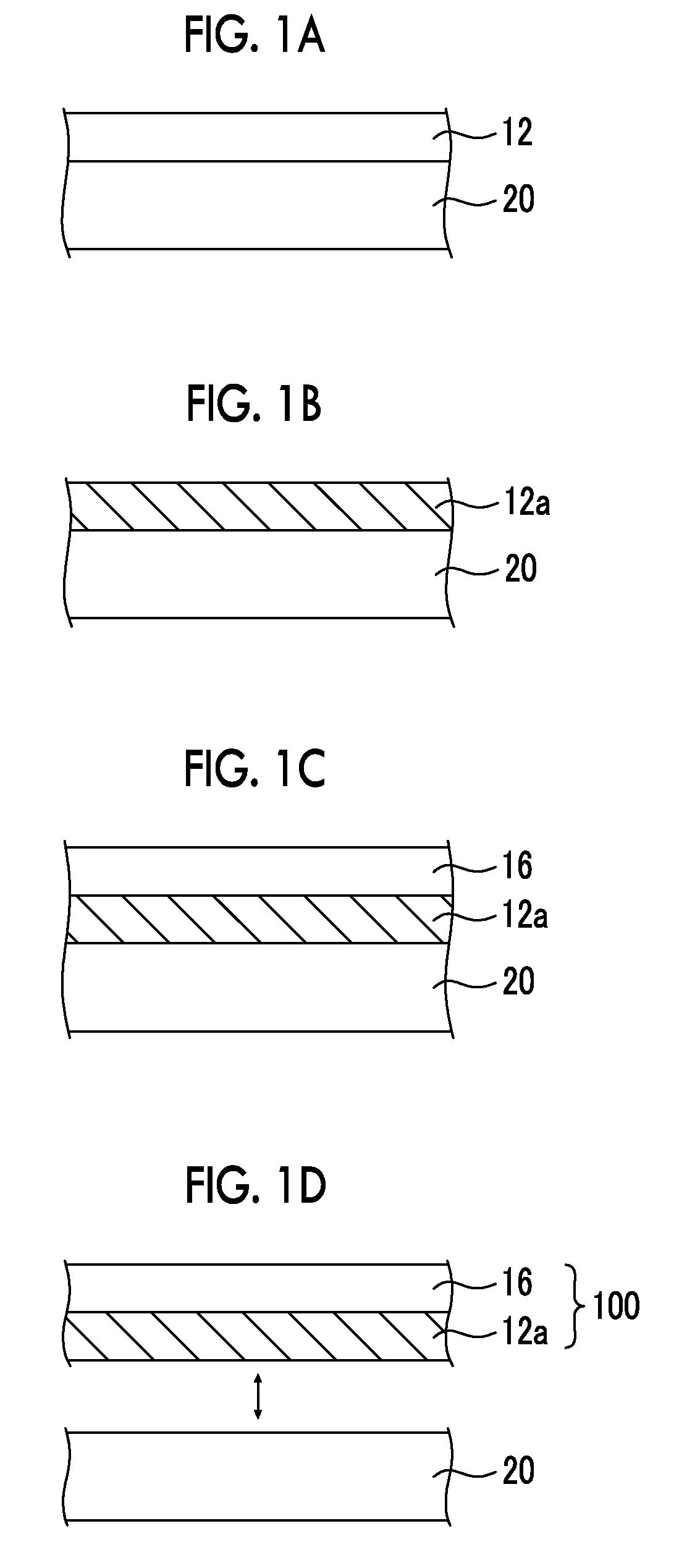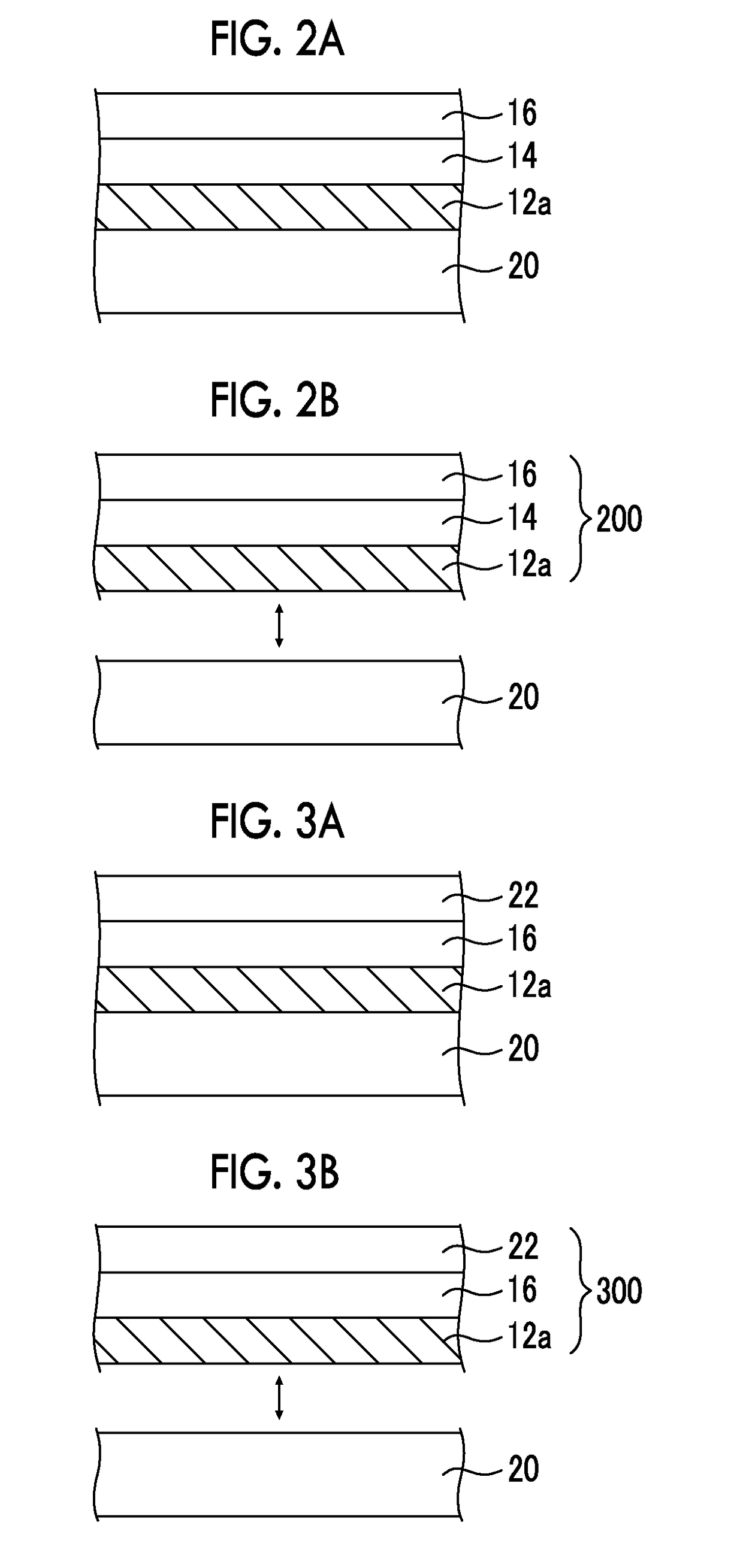Method for producing photocatalyst electrode for water decomposition
a photocatalyst and electrode technology, applied in catalyst activation/preparation, metal/metal-oxide/metal-hydroxide catalysts, energy-based chemical/physical/physical-chemical processes, etc., can solve the problems of conductive substrate electrical conductivity degradation, unsuitable method, etc., and achieve excellent detachability and high photocurrent density
- Summary
- Abstract
- Description
- Claims
- Application Information
AI Technical Summary
Benefits of technology
Problems solved by technology
Method used
Image
Examples
examples
[0146]Hereinafter, the invention will be explained in more detail by way of Examples; however, the invention is not intended to be limited to these.
examples 1 to 6
[0147](Metal Layer Forming Step (Production of Ta / Si))
[0148]A Si substrate (manufactured by Nilaco Corporation, low resistance type, orientation (100) N-type) cut into a size of 1×1 cm2 was subjected to ultrasonic cleaning using various solvents, namely, acetone, 2-propanol, and water, for 10 minutes for each solvent.
[0149]A Ta thin film (Ta layer) was produced on the cleaned Si substrate by RF sputtering (Ulvac, MNS-2000-RFG3) so as to obtain a film thickness of 250 nm, and thus a Ta layer on a Si substrate (Ta / Si) was obtained.
[0150]Regarding the target, Ta manufactured by Kojundo Chemical Laboratory Co., Ltd. (99.95%) was used, and the power output was set to 100 W, while the sputtering rate was set to 25 nm / min. The pressure (back pressure) was set to 2.0×10−5 Pa, and the pressure at the time of Ar introduction was set to 1.0×10−1 Pa. Furthermore, the distance between the Si substrate (sample) and the Ta target was set to 10 cm, and the substrate temperature was set to 500° C.
[0...
example 7
[0170]After the detachment step and before the formation of the photocatalyst electrode for water decomposition, the Ta3N5 / Ta / Ti thin film was immersed for 10 seconds in an aqueous solution of HF and HNO3, and thereby the surface of the Ta3N5 was cleaned (cleaning process). The other steps were carried out in the same manner as in Example 3, and thus a Ta3N5 thin film electrode of Example 7 was obtained.
PUM
| Property | Measurement | Unit |
|---|---|---|
| thickness | aaaaa | aaaaa |
| thickness | aaaaa | aaaaa |
| thickness | aaaaa | aaaaa |
Abstract
Description
Claims
Application Information
 Login to View More
Login to View More - R&D
- Intellectual Property
- Life Sciences
- Materials
- Tech Scout
- Unparalleled Data Quality
- Higher Quality Content
- 60% Fewer Hallucinations
Browse by: Latest US Patents, China's latest patents, Technical Efficacy Thesaurus, Application Domain, Technology Topic, Popular Technical Reports.
© 2025 PatSnap. All rights reserved.Legal|Privacy policy|Modern Slavery Act Transparency Statement|Sitemap|About US| Contact US: help@patsnap.com



